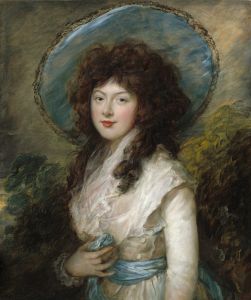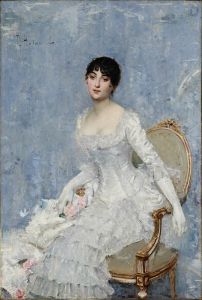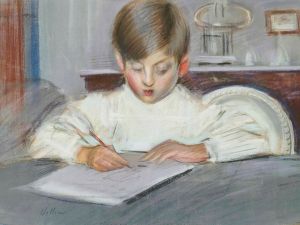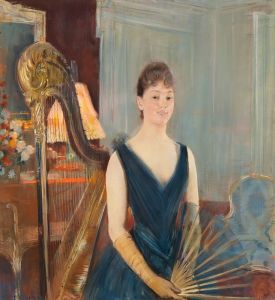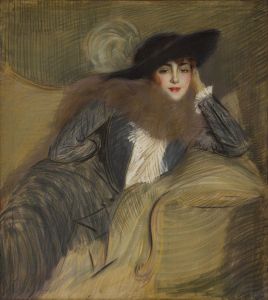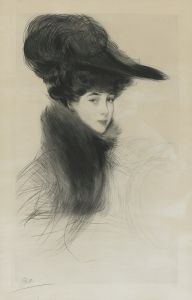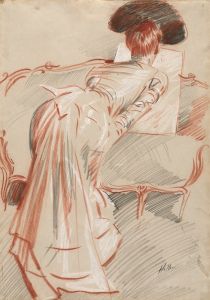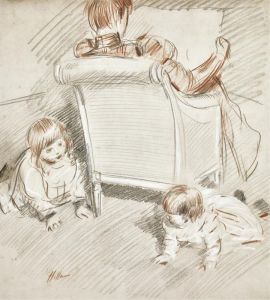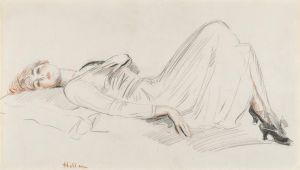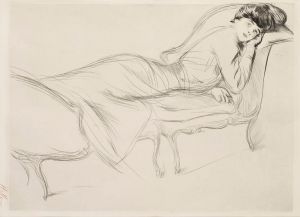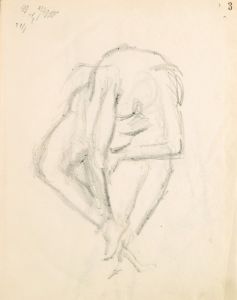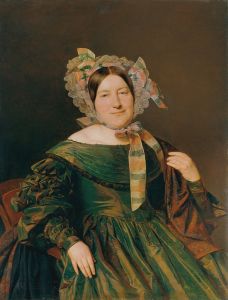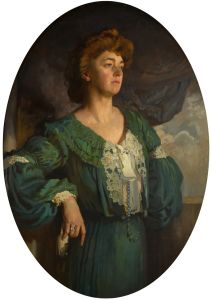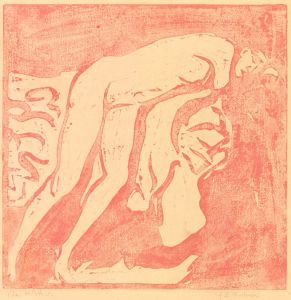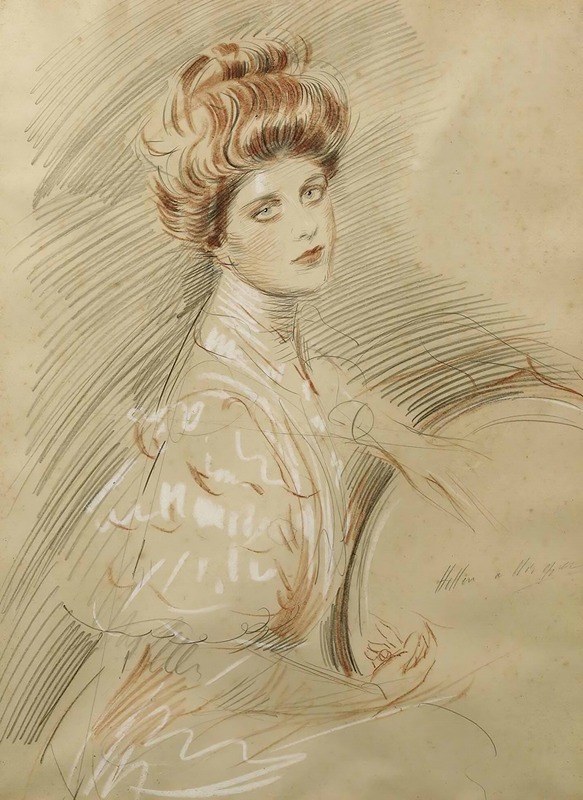
Portrait De Femme
A hand-painted replica of Paul César Helleu’s masterpiece Portrait De Femme, meticulously crafted by professional artists to capture the true essence of the original. Each piece is created with museum-quality canvas and rare mineral pigments, carefully painted by experienced artists with delicate brushstrokes and rich, layered colors to perfectly recreate the texture of the original artwork. Unlike machine-printed reproductions, this hand-painted version brings the painting to life, infused with the artist’s emotions and skill in every stroke. Whether for personal collection or home decoration, it instantly elevates the artistic atmosphere of any space.
Paul César Helleu (1859–1927) was a French artist renowned for his portraits of elegant women from the Belle Époque era. His works, often created using drypoint engraving, pastels, and oil paints, captured the grace and sophistication of his subjects. Among his notable works is Portrait de Femme, a painting that exemplifies his mastery in portraying feminine beauty and charm.
Portrait de Femme is a striking example of Helleu's ability to depict the delicate features and refined demeanor of his sitters. The artwork showcases his characteristic style, which combines a light, fluid touch with meticulous attention to detail. Helleu often worked with members of high society, including aristocrats and socialites, and his portraits reflect the fashion and elegance of the late 19th and early 20th centuries. While specific details about the identity of the woman in Portrait de Femme are not widely documented, the painting is celebrated for its timeless representation of grace and poise.
Helleu's artistic career was marked by his close association with other prominent artists of his time, including John Singer Sargent and James McNeill Whistler. He was also influenced by the Impressionists, particularly Claude Monet, with whom he shared a friendship. Despite these influences, Helleu developed a distinctive style that set him apart, focusing on the intimate and personal aspects of portraiture.
The medium and dimensions of Portrait de Femme vary depending on the specific version or reproduction, as Helleu often revisited similar themes and compositions in his work. His use of drypoint engraving, in particular, allowed him to create fine, expressive lines that enhanced the elegance of his subjects. This technique, combined with his skill in pastel and oil, contributed to the enduring appeal of his portraits.
Today, Helleu's works, including Portrait de Femme, are held in private collections and museums worldwide. They continue to be admired for their beauty and for their ability to capture the spirit of an era defined by refinement and artistic innovation. Helleu's legacy as a portraitist remains significant, and his contributions to the art of the Belle Époque are recognized as an important part of art history.





